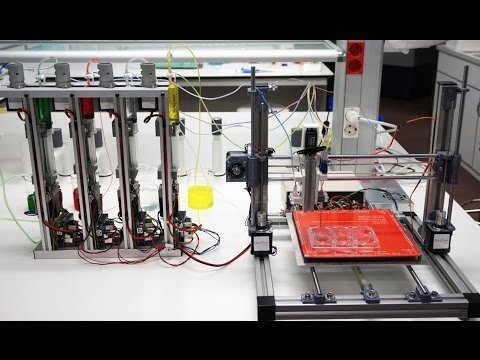Spanish scientists from Madrid have created an astronomical technological advancement — a bioprinter that prints human skin.
First, the robots came for your jobs, now they are coming for your skin. It seems like a movie scenario, but scientist at the Universidad Carlos III de Madrid (UC3M), CIEMAT (Center for Energy, Environmental and Technological Research), have created artificial authentic human skin.
[RELATED: The Shift Towards Business With Little to No Humans]
The skin has many feasible uses and can be used to transplant to patients or for use in research testing of cosmetic, chemical, and pharmaceutical products that go into the human body.
Skin “can be transplanted into patients or used in business settings to test chemical products, cosmetics or pharmaceutical products in quantities and with timetables and prices that are compatible with these uses,” Professor José Luis Jorcano head of the Mixed Unit CIEMAT/UC3M in Biomedical Engineering said.
The group added that “we use only human cells and components to produce skin that is bioactive and can generate its own human collagen, thereby avoiding the use of the animal collagen that is found in other methods,” they said.
This is one of the first living human organs created using bioprinting and is a real milestone for medical science.
Last year researchers at Harvard University made the first 3-D-printed heart-on-a-chip with integrated sensing.
When the skin is put on the market, it means that people who have had life-altering permanent skin damage can have their bodies repaired with skin that will resemble their own.
So what is a bioprinter as compared to a regular printer? According to the study, the bioprinter uses Bioinks as opposed to the normal inks a paper printer uses.
“Bioinks are key to 3D bioprinting, according to the experts. When creating skin, instead of cartridges and colored inks, injectors with biological components are used. In the words of Juan Francisco del Cañizo, of the Hospital General Universitario Gregorio Marañón and Universidad Complutense de Madrid researcher. “Knowing how to mix the biological components, in what conditions to work with them so that the cells don’t deteriorate, and how to correctly deposit the product is critical to the system.” The act of depositing these bioinks, which are patented by CIEMAT and licensed by the BioDan Group, is controlled by a computer, which deposits them on a print bed in an orderly manner to then produce the skin,” the study said.
Currently, this development is in the phase of being approved by different European regulatory agencies to guarantee that the skin that is produced is adequate for use in transplants on burn patients and those with other skin problems. In addition, these tissues can be used to test pharmaceutical products, as well as cosmetics and consumer chemical products where current regulations require testing that does not use animals.
This may in the future allow scientist to create skin regeneration to achieve a technological marvel where human skin heals itself.
On the otherhand, some may argue that this is a giant leap towards “transhumanism,” a world where humans begin to take on robotic features.
Whatever your take, you can’t argue that this isn’t a huge discovery for medical science.
What do you think of this amazing technological advancement? Let us know in the comment section below!











Sign up on lukeunfiltered.com or to check out our store on thebestpoliticalshirts.com.